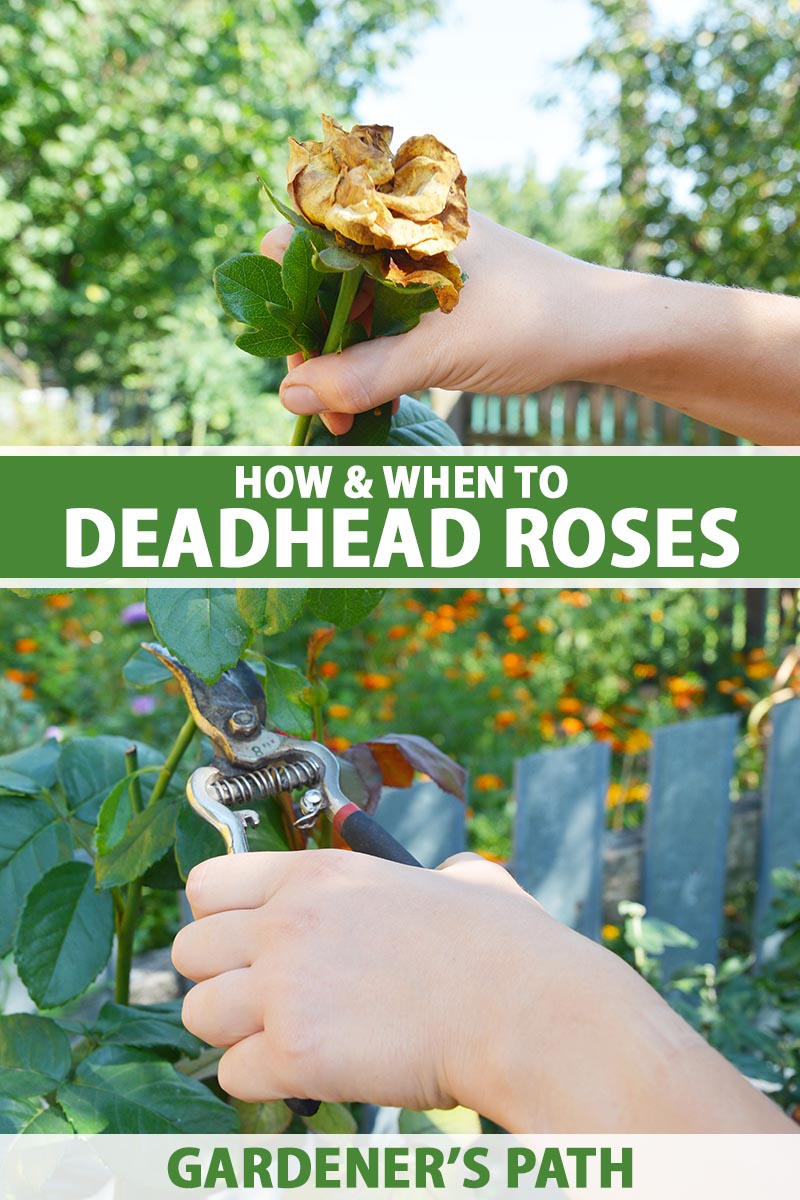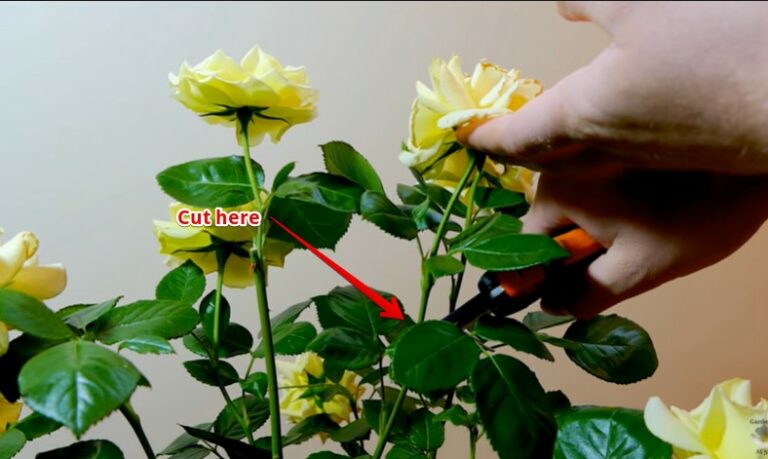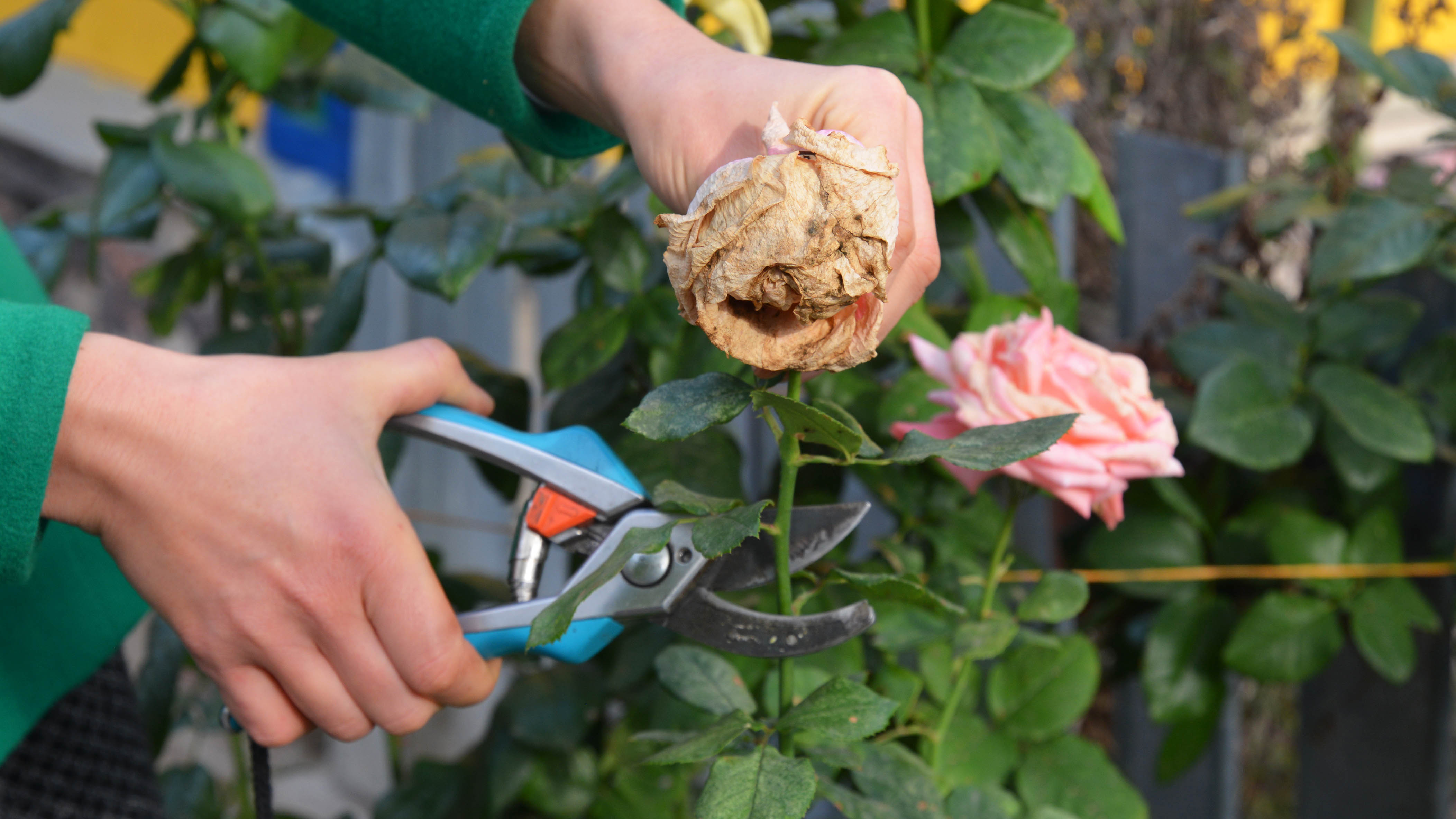What is Deadheading and Why is it Important for Roses?
Deadheading is a simple yet effective technique used to promote healthy growth and encourage repeat blooming in rose plants. By removing spent blooms, also known as deadheading, gardeners can improve the overall appearance of their roses and increase the number of blooms produced. But why is deadheading so important for roses?
Roses, like many other flowering plants, produce blooms as a way to reproduce. When a bloom is allowed to go to seed, the plant’s energy is focused on producing seeds rather than new blooms. By removing the spent bloom, gardeners can redirect the plant’s energy towards producing new growth and blooms. This process is especially important for rose varieties that are bred for their repeat-blooming characteristics.
Deadheading also helps to maintain the plant’s appearance by removing unsightly, wilted blooms. This can be especially important for gardeners who want to showcase their roses in a prominent location, such as a front garden bed or container. By regularly deadheading, gardeners can keep their roses looking their best and encourage a longer blooming season.
But should you deadhead roses after they bloom? The answer is a resounding yes. Deadheading is a crucial step in rose care, and it can make a significant difference in the health and appearance of your plants. By incorporating deadheading into your rose care routine, you can enjoy more blooms, healthier plants, and a more vibrant garden.
In fact, deadheading is so important for roses that it’s often considered one of the most critical steps in rose care. By removing spent blooms, gardeners can encourage their roses to produce more blooms, which can lead to a longer blooming season and a more impressive display of color. And, as an added bonus, deadheading can also help to reduce the risk of disease and pests, which can be attracted to spent blooms.
So, if you want to get the most out of your roses and enjoy a longer blooming season, make sure to deadhead regularly. With a little practice, you’ll be able to deadhead like a pro and enjoy the many benefits that this simple technique has to offer.
How to Deadhead Roses for More Blooms
Deadheading roses is a simple process that requires some basic tools and a bit of knowledge. To get started, you’ll need a pair of clean, sharp pruning shears or loppers, depending on the size of your rose stems. It’s also a good idea to wear a pair of gardening gloves to protect your hands from thorns.
The best time to deadhead roses is immediately after they finish blooming. This is usually when the petals have dropped off and the bloom has started to wilt. Cut the stem at a 45-degree angle, just above a leaf node (the point where a leaf meets the stem). Make sure to cut just above a node that has at least three leaves, as this will help the plant to heal quickly and reduce the risk of disease.
When cutting the stem, make a clean cut just above the node, using a gentle sawing motion. Don’t twist or pull the stem, as this can damage the plant. If you’re deadheading a large number of roses, it’s a good idea to disinfect your pruning shears between cuts to prevent the spread of disease.
One of the most common mistakes people make when deadheading roses is removing too much of the stem. This can weaken the plant and reduce its ability to produce new blooms. Instead, focus on removing just the spent bloom and a small portion of the stem. This will help the plant to conserve energy and promote new growth.
Another important thing to keep in mind when deadheading roses is to make clean cuts. This will help the plant to heal quickly and reduce the risk of disease. If you’re unsure about how to make a clean cut, it’s a good idea to practice on a few stems before deadheading your entire rose garden.
Deadheading roses is a simple process that can make a big difference in the health and appearance of your plants. By following these steps and avoiding common mistakes, you can encourage your roses to produce more blooms and enjoy a longer blooming season. So, should you deadhead roses after they bloom? The answer is a resounding yes, and with these tips, you’ll be well on your way to becoming a deadheading pro.
The Science Behind Deadheading: How it Affects Rose Plant Hormones
Deadheading roses is not just a simple process of removing spent blooms, but it also has a profound impact on the plant’s hormone balance. Roses, like all plants, have a complex system of hormones that regulate growth, development, and reproduction. One of the key hormones involved in this process is auxin, which promotes cell elongation and cell division.
When a rose bloom is allowed to go to seed, the plant’s energy is focused on producing seeds rather than new growth. This is because the seeds contain high levels of auxin, which inhibits the production of new shoots and flowers. By removing the spent bloom, deadheading disrupts this process and allows the plant to redirect its energy towards producing new growth and blooms.
Another hormone that plays a crucial role in deadheading is ethylene. Ethylene is a gas that is produced by plants as they age and is responsible for promoting senescence, or the aging process. When a rose bloom is removed, the plant produces less ethylene, which slows down the aging process and promotes new growth.
Deadheading also affects the plant’s cytokinin levels. Cytokinins are hormones that promote cell division and differentiation, and are responsible for the formation of new shoots and flowers. By removing the spent bloom, deadheading stimulates the production of cytokinins, which promotes new growth and blooming.
Understanding the science behind deadheading can help gardeners to better appreciate the importance of this technique in rose care. By disrupting the plant’s hormone balance, deadheading promotes new growth, blooming, and overall plant health. So, should you deadhead roses after they bloom? The answer is a resounding yes, as it can make a significant difference in the health and appearance of your plants.
In addition to its impact on hormone balance, deadheading also has a number of other benefits for rose plants. It can help to improve air circulation, reduce the risk of disease, and promote healthy growth. By incorporating deadheading into your rose care routine, you can enjoy a healthier, more vibrant garden and a longer blooming season.
Should You Deadhead All Types of Roses?
While deadheading is a beneficial technique for many types of roses, it’s not suitable for all varieties. Different types of roses have different growth habits and blooming characteristics, and some may not require deadheading at all.
Hybrid tea roses, for example, are one of the most common types of roses that benefit from deadheading. These roses produce large, repeat-blooming flowers that can be encouraged to produce more blooms by removing the spent flowers. Floribundas, on the other hand, produce clusters of blooms that can be deadheaded to promote more flowering.
Climbing roses, however, are a different story. These roses produce long, trailing canes that can be trained to climb up trellises or other supports. Deadheading climbing roses can be more challenging than other types of roses, as the blooms are often produced in clusters along the length of the cane. However, removing the spent blooms can still encourage more flowering and promote healthy growth.
Shrub roses, such as Knock Out and Drift roses, are another type of rose that may not require deadheading. These roses produce continuous blooms throughout the growing season and can be maintained with regular pruning and fertilization.
It’s also worth noting that some rose varieties, such as English roses and old garden roses, may not produce repeat blooms and therefore may not benefit from deadheading. However, removing the spent blooms can still help to maintain the plant’s appearance and promote healthy growth.
Ultimately, whether or not to deadhead a particular type of rose depends on the specific variety and its growth habits. By understanding the characteristics of your rose plants, you can determine whether deadheading is necessary and how to incorporate it into your rose care routine.
So, should you deadhead roses after they bloom? The answer depends on the type of rose you have and its specific needs. By considering the growth habits and blooming characteristics of your rose plants, you can make informed decisions about whether to deadhead and how to care for your plants to promote healthy growth and abundant blooms.
Common Mistakes to Avoid When Deadheading Roses
Deadheading roses can be a simple and effective way to promote healthy growth and encourage repeat blooming. However, there are some common mistakes to avoid when deadheading roses to ensure that you are getting the most out of this technique.
One of the most common mistakes people make when deadheading roses is removing too much of the stem. This can weaken the plant and reduce its ability to produce new blooms. Instead, focus on removing just the spent bloom and a small portion of the stem. This will help the plant to conserve energy and promote new growth.
Another mistake to avoid is not making clean cuts when deadheading roses. This can lead to the spread of disease and pests, and can also cause the plant to become stressed. To avoid this, make sure to use clean and sharp pruning tools, and to cut just above a leaf node (the point where a leaf meets the stem).
Not deadheading roses at the right time is another common mistake. Deadheading roses should be done immediately after they finish blooming, as this will help to promote new growth and encourage repeat blooming. If you wait too long to deadhead, the plant may have already started to produce seeds, which can reduce its ability to produce new blooms.
Finally, not removing all of the spent blooms is another mistake to avoid. This can lead to a reduction in the plant’s ability to produce new blooms, and can also cause the plant to become stressed. To avoid this, make sure to remove all of the spent blooms, including any that may be hidden among the foliage.
By avoiding these common mistakes, you can ensure that you are getting the most out of deadheading roses and promoting healthy growth and repeat blooming. So, should you deadhead roses after they bloom? The answer is a resounding yes, as long as you do it correctly and avoid these common mistakes.
Deadheading roses is a simple and effective way to promote healthy growth and encourage repeat blooming. By following these tips and avoiding common mistakes, you can enjoy a healthier, more vibrant garden and a longer blooming season.
Deadheading vs. Pruning: What’s the Difference?
Deadheading and pruning are two common techniques used in rose care, but they serve different purposes and are used at different times. Understanding the difference between deadheading and pruning can help you to better care for your roses and promote healthy growth and blooming.
Deadheading, as we’ve discussed, is the process of removing spent blooms from rose plants to promote repeat blooming and improve the plant’s appearance. This technique is typically used immediately after the blooms have faded, and is a simple and effective way to encourage more blooms and promote healthy growth.
Pruning, on the other hand, is a more extensive process that involves cutting back the stems and branches of the rose plant to promote new growth, control the plant’s size and shape, and encourage blooming. Pruning is typically done in late winter or early spring, before new growth begins, and is a more invasive process than deadheading.
While deadheading and pruning are two separate techniques, they can be used together to promote healthy growth and blooming in rose plants. By deadheading your roses regularly, you can encourage repeat blooming and improve the plant’s appearance, and by pruning your roses annually, you can control the plant’s size and shape, and promote new growth.
So, how do you incorporate both deadheading and pruning into your rose care routine? The key is to understand the different purposes of each technique and to use them at the right time. By deadheading your roses regularly, you can encourage repeat blooming and improve the plant’s appearance, and by pruning your roses annually, you can control the plant’s size and shape, and promote new growth.
By combining deadheading and pruning, you can create a comprehensive rose care routine that promotes healthy growth, blooming, and overall plant health. So, should you deadhead roses after they bloom? The answer is a resounding yes, and by incorporating pruning into your routine, you can take your rose care to the next level.
Remember, deadheading and pruning are two separate techniques that serve different purposes, but can be used together to promote healthy growth and blooming in rose plants. By understanding the difference between these two techniques, you can create a comprehensive rose care routine that promotes healthy growth, blooming, and overall plant health.
How Deadheading Affects Rose Plant Care and Maintenance
Deadheading roses is an important part of rose plant care, but it can also affect other aspects of maintenance. For example, deadheading can impact watering, fertilizing, and pest management.
When it comes to watering, deadheading can help to reduce the amount of water needed by the plant. By removing spent blooms, you can reduce the amount of water lost through transpiration, which can help to conserve water and reduce the risk of overwatering.
Fertilizing is another aspect of rose plant care that can be affected by deadheading. By removing spent blooms, you can help to promote new growth and blooming, which can increase the plant’s nutrient requirements. However, overfertilizing can be detrimental to the plant, so it’s essential to strike a balance between fertilizing and deadheading.
Pest management is also an important consideration when it comes to deadheading roses. By removing spent blooms, you can help to reduce the risk of pests and diseases, such as aphids and black spot. However, it’s essential to monitor the plant regularly for signs of pests and diseases, and to take action promptly if necessary.
In addition to these aspects of maintenance, deadheading can also affect the overall health and vigor of the plant. By promoting new growth and blooming, deadheading can help to improve the plant’s overall health and vigor, which can make it more resistant to pests and diseases.
So, how can you incorporate deadheading into your rose plant care routine? The key is to understand the different aspects of maintenance that can be affected by deadheading, and to take a holistic approach to care. By deadheading regularly, you can promote healthy growth and blooming, while also reducing the risk of pests and diseases.
By considering the impact of deadheading on other aspects of rose plant care, you can create a comprehensive care routine that promotes healthy growth, blooming, and overall plant health. So, should you deadhead roses after they bloom? The answer is a resounding yes, as it can have a significant impact on the plant’s overall health and vigor.
Conclusion: The Benefits of Deadheading for a Thriving Rose Garden
Deadheading roses is a simple yet effective technique that can have a significant impact on the health and appearance of your rose garden. By removing spent blooms, you can promote repeat blooming, improve the plant’s overall appearance, and encourage healthy growth.
As we’ve discussed, deadheading is a technique that involves removing the spent blooms from your rose plants to promote new growth and blooming. This technique is suitable for most types of roses, including hybrid teas, floribundas, and climbing roses.
By incorporating deadheading into your rose care routine, you can enjoy a healthier, more vibrant garden with more blooms and a longer blooming season. Deadheading can also help to reduce the risk of pests and diseases, and can improve the overall health and vigor of your rose plants.
So, should you deadhead roses after they bloom? The answer is a resounding yes. Deadheading is a simple and effective technique that can have a significant impact on the health and appearance of your rose garden.
By following the tips and guidelines outlined in this article, you can learn how to deadhead your roses like a pro and enjoy a thriving rose garden with more blooms and a longer blooming season. Remember to deadhead your roses regularly, use the right tools, and make clean cuts to avoid damaging the plant.
With deadheading, you can take your rose care to the next level and enjoy a healthier, more vibrant garden. So, go ahead and give deadheading a try, and see the difference it can make in your rose garden.







:strip_icc()/deadheading-roses-00nNzI7O4WQAKgSBC9W-ew-8fa3bf18111046a8b9199ad89729d522.jpg)

